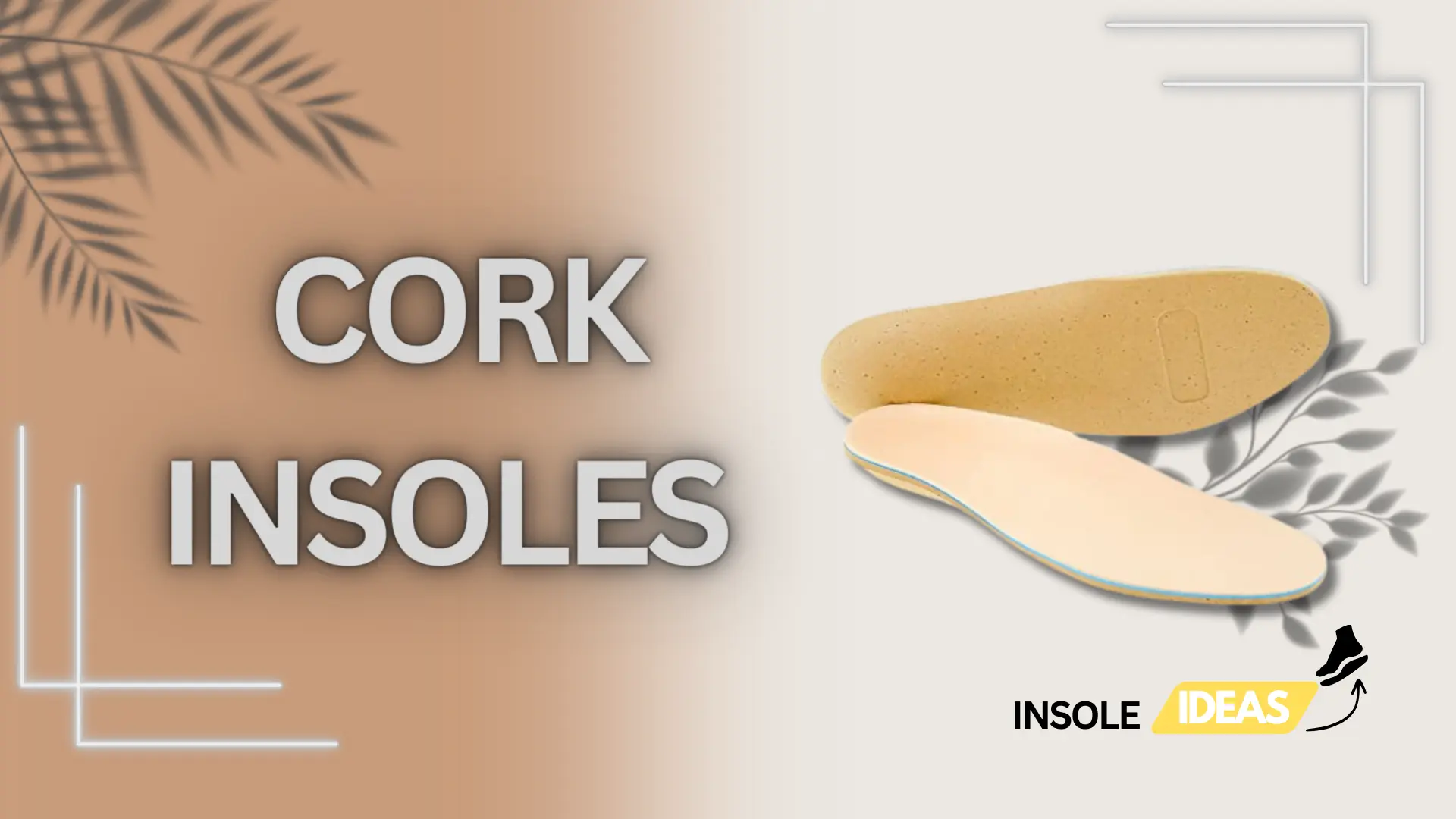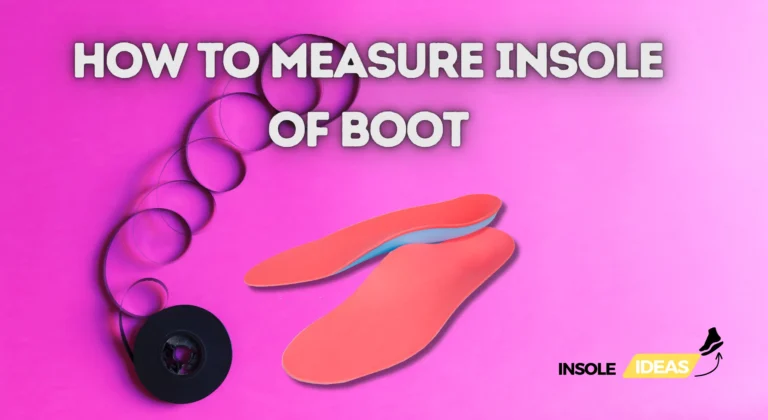Cork Insoles: Your Pathway to All-Day Comfort
Cork insoles are inserts made primarily from cork material, known for their use in footwear to provide support, comfort, and various health benefits. Composed predominantly of natural cork derived from the bark of the cork oak tree, these insoles have a rich historical significance dating back centuries.
Definition and Composition
Cork insoles are crafted from the outer bark of the cork oak tree, meticulously processed to create a versatile and resilient material. The cork is finely ground, compressed, and molded into specific shapes to fit various shoe sizes and designs. These insoles are commonly used to improve the comfort and functionality of shoes by offering additional support and cushioning.
Historical Significance
The utilization of cork insoles can be traced back to ancient civilizations where cork was valued for its buoyancy and resilience. The Romans and Greeks used cork in various forms, recognizing its natural properties that made it suitable for footwear enhancements. Over time, advancements in manufacturing have refined cork insole production, making them a staple in modern shoe design and orthopedic applications.
Characteristics of Cork Insoles
Cork insoles boast a range of inherent characteristics that contribute to their popularity and effectiveness in footwear.
Natural Properties of Cork
Lightweight and Durable
Cork’s cellular structure is remarkably lightweight yet durable, making it an ideal material for insoles. Its ability to provide support without adding excessive weight makes it suitable for everyday wear and various activities.
Moisture-Wicking Abilities
One of cork’s outstanding attributes is its natural moisture-wicking properties. This allows it to absorb and dissipate moisture, keeping the foot dry and comfortable while preventing the development of odors and microbial growth.
Cushioning and Support
Despite its lightweight nature, cork offers excellent cushioning and support. It conforms to the shape of the foot, providing a personalized fit and distributing pressure evenly, thereby reducing discomfort and potential foot-related issues.
Benefits of Using Cork Insoles
Cork insoles offer a multitude of benefits, ranging from orthopedic advantages to promoting overall foot health.
Orthopedic Advantages
Arch Support and Alignment
Cork insoles are designed to provide optimal arch support, aiding in maintaining proper foot alignment. This feature helps alleviate discomfort associated with flat feet or high arches and can prevent issues such as plantar fasciitis by distributing pressure evenly across the foot.
Impact Absorption
The natural resilience of cork enables it to absorb shock efficiently, reducing the impact on joints and muscles during walking or physical activities. This shock-absorbing quality aids in preventing fatigue and potential injuries, particularly in high-impact sports.
Health Benefits
Antimicrobial Properties
Cork possesses inherent antimicrobial properties, inhibiting the growth of bacteria and fungi. This characteristic helps maintain foot hygiene, reducing the risk of infections and unpleasant odors.
Breathability and Odor Control
The porous nature of cork facilitates breathability, allowing air circulation around the foot. This breathability, coupled with its moisture-wicking abilities, helps control perspiration and moisture accumulation, thereby minimizing odor formation.
Applications and Versatility
Footwear Industry
Types of Shoes Using Cork Insoles
Cork insoles are integrated into various types of footwear, including casual shoes, athletic sneakers, sandals, and even some dress shoes. They are often used in specialized orthopedic footwear as well, catering to specific foot conditions and providing tailored support.
Customization and Adaptability
These insoles offer customization options, allowing individuals to trim them to fit their shoes perfectly. Their adaptability makes them suitable for a wide range of shoe sizes and styles.
Other Utilizations
Sporting Goods
Apart from footwear, cork insoles find applications in sporting goods such as ski boots, cycling shoes, and running sneakers. The shock-absorbing properties of cork make it valuable in enhancing performance and comfort during athletic activities.
Medical Devices
In the medical field, cork insoles are utilized in orthotic devices and prosthetics due to their ability to offer support and cushioning for individuals with specific foot conditions or amputations.
Environmental Sustainability

Renewable and Eco-Friendly Nature of Cork
Cork insoles are intrinsically eco-accommodating as they are produced using the inexhaustible bark of the Cork oak tree. The harvesting process doesn’t harm the tree, as only the outer bark is collected, allowing the tree to regenerate its bark. This sustainable harvesting method ensures the longevity of cork oak forests and supports biodiversity.
Recycling and Reusability
Cork insoles are recyclable and biodegradable, contributing to their eco-friendly nature. Used insoles can be repurposed into various products or recycled to create new cork-based materials, reducing waste and promoting a circular economy.
Challenges and Considerations
Limitations of Cork Insoles
While cork insoles offer numerous advantages, they might not be suitable for all foot types or conditions. Individuals with severe foot deformities or specific orthopedic needs might require customized orthotic solutions beyond what cork insoles can offer.
Maintenance and Care Tips
To ensure longevity and effectiveness, cork insoles require proper maintenance. Regular cleaning and allowing them to air-dry after use can prevent the buildup of odor-causing bacteria and extend their lifespan.
Future Trends and Innovations
Technological Advancements in Cork Insole Design
Ongoing research and advancements in materials science are leading to innovations in cork insole design. This includes integrating new materials or incorporating technologies for enhanced cushioning, durability, and tailored support.
Potential Market Growth and Expansion
The growing emphasis on sustainable and eco-friendly products in the footwear industry positions cork insoles favorably. Anticipated advancements in manufacturing and increased consumer awareness of their benefits could lead to expanded market penetration.
Conclusion
In conclusion, cork insoles present a compelling combination of natural properties, health benefits, and environmental sustainability. Their versatility in footwear applications, coupled with ongoing innovations, signifies a promising future for cork-based solutions in enhancing comfort, support, and overall foot health. As consumer preferences shift toward sustainable products, cork insoles stand poised for continued growth and adoption in various industries.





